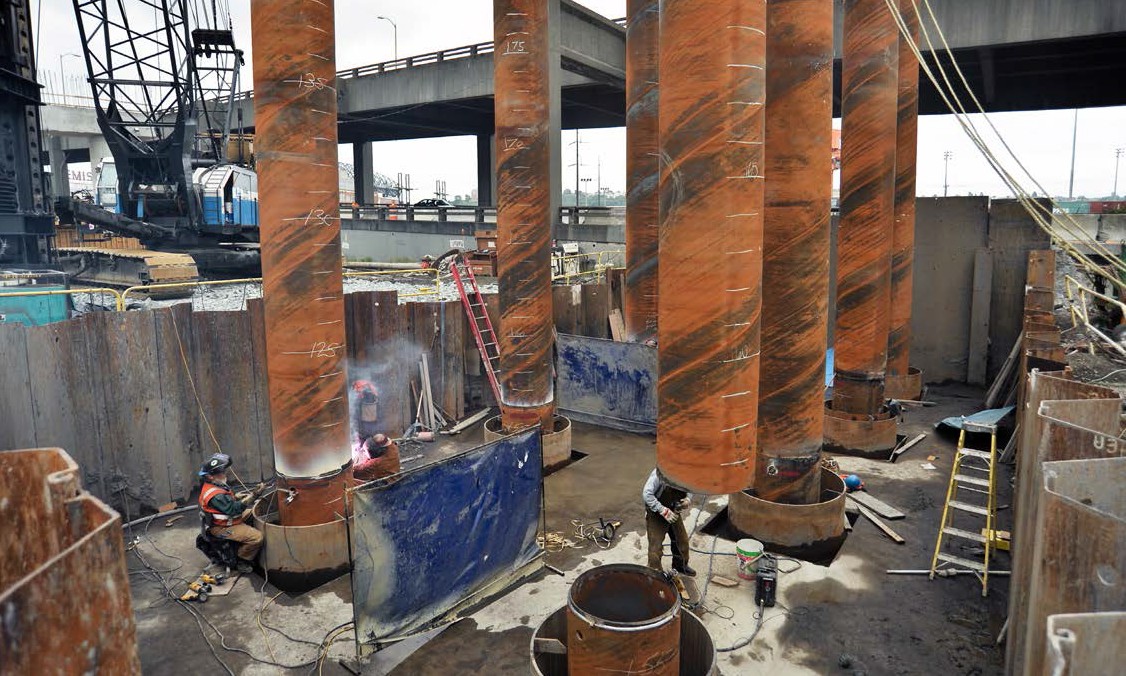Concrete-filled steel tubes (CFSTs) and reinforced concrete-filled steel tubes (RCFSTs) are increasingly used in transportation structures as piers, piles, caissons, or other foundation components. CFSTs combine steel and concrete to create efficient and economical composite structural members. They utilize the high strength and ductility of steel and the ability concrete to efficiently carry compressive load and flexure. The concrete restrains local buckling of the steel tube, while the steel tube provides longitudinal and transverse reinforcement of the concrete. The steel tube provides formwork and shoring during construction, thus speeding construction and reducing costs. Reinforced concrete-filled steel tubes (RCFSTs) are less commonly employed but can be found when other structural components are connected to CFSTs or when increased strength is required because of geometric limitations.
While the axial and flexural properties of CFTs have been well researched, research on their shear resistance is lacking. Currently accepted methods for calculating the shear capacity of CFSTs and RCFTs are adapted from shear strength equations used for structural steel or reinforced concrete components. However, all methods neglect the CFT’s composite behavior and therefore likely significantly underestimate the shear capacity of the composite section, potentially increasing undesirable conservatism and cost. Unfortunately, without experimental data to validate the design expressions, it is not possible to modify them.
This research used integrated experimental testing methods, combined with high-resolution analytical models, to investigate the shear capacity of CFST and RCFST members and to develop an improved and more accurate shear strength expression.
The experimental study included 22 large-scale CFTs subjected to four-point bending: 17 CFST specimens, four RCFST specimens, and one steel tube with gravel in shear spans. The study parameters included shear span to diameter ratio, concrete strength, internal reinforcement, tube type (spiral or straight seam), the condition of the internal concrete (gravel or cured concrete), axial load, internal surface condition (muddied, clean or greased), and the length of the specimen beyond the support. With the tests completed, the test data were compared to previous test results and various design models for predicting CFST behavior.
On the basis of the test results, the research team developed a new shear strength calculation. This new calculation provides a total CFST shear strength of 2 times that produced by WSDOT’s currently used expression. This will allow designers to reduce the size of CFT and RCFT members, resulting in significant cost savings and improvement in the seismic performance of pile and drilled shaft foundations.
Authors:
Charles Roeder
Dawn Lehman
Ashley Heid
Todd Maki
UW Department of Civil and Environmental Engineering
Sponsor: WSDOT
WSDOT Technical Monitor: Bijan Khaleghi
WSDOT Project Manager: Lu Saechao

